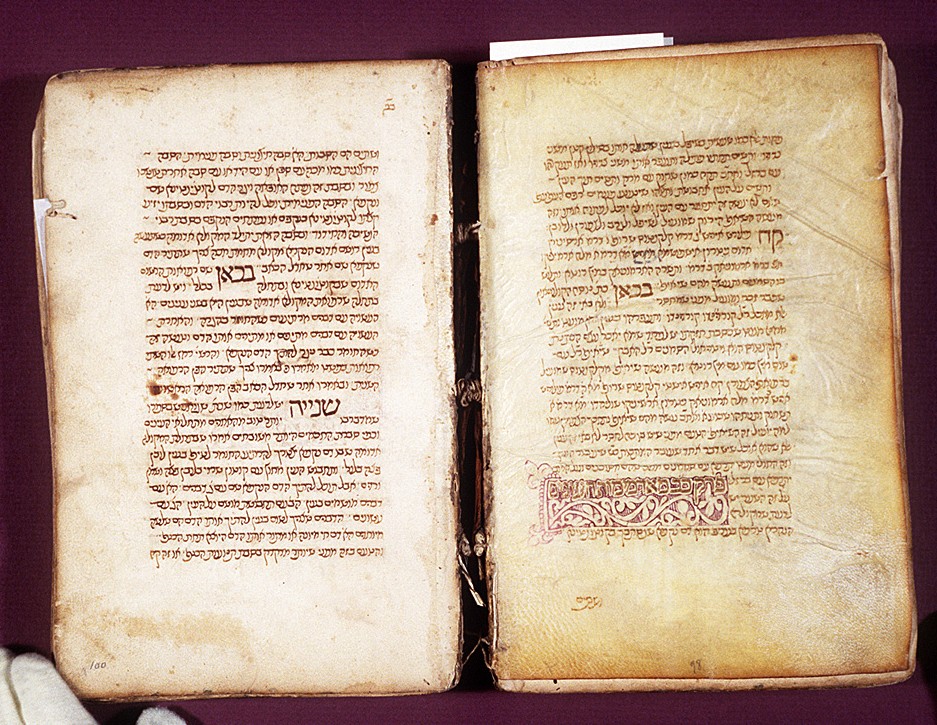By Rhazes. Expounded and commented upon by Gerard de Solo. Translated into Hebrew by the physician Tobiel ben Samuel de Leiria of Portugal.
 Hebrew manuscript on vellum and paper. Portugal, 1388. Ff. [203], 20 x 13 cm. View the full text of this manuscript online.Born in northeastern Persia, Abu Bakr Muhammad ibn Zakariyya al-Razi (ca. 854-925 or 935), better known as Rhazes, was a leading figure in the field of medicine, ranking with Hippocrates and Galen as one of the founders of clinical medicine. A true follower of the Hippocratic school in describing disease and giving a prognosis, Rhazes studied medicine at Baghdad, where he later became hospital director, teacher, and court physician. The Al-Mansuri, one of Rhazes' many writings, consists of ten parts (books) and is an encyclopedic review of medicine. Focused on pathology, the Ninth Book was most influential in the West, where it was often translated and became the standard source for teaching therapeutics until long after the Renaissance. Commentaries on the Ninth Book by leading Western scholars like Gerard de Solo, the expounder, and commentator on the Reynolds-Finley translation, added to its popularity and use as a practical guide for medical students.
Hebrew manuscript on vellum and paper. Portugal, 1388. Ff. [203], 20 x 13 cm. View the full text of this manuscript online.Born in northeastern Persia, Abu Bakr Muhammad ibn Zakariyya al-Razi (ca. 854-925 or 935), better known as Rhazes, was a leading figure in the field of medicine, ranking with Hippocrates and Galen as one of the founders of clinical medicine. A true follower of the Hippocratic school in describing disease and giving a prognosis, Rhazes studied medicine at Baghdad, where he later became hospital director, teacher, and court physician. The Al-Mansuri, one of Rhazes' many writings, consists of ten parts (books) and is an encyclopedic review of medicine. Focused on pathology, the Ninth Book was most influential in the West, where it was often translated and became the standard source for teaching therapeutics until long after the Renaissance. Commentaries on the Ninth Book by leading Western scholars like Gerard de Solo, the expounder, and commentator on the Reynolds-Finley translation, added to its popularity and use as a practical guide for medical students.
The translator of the Library's Hebrew version from Latin was the Jewish physician Tobiel ben Samuel de Leiria (Portugal), who lived in the last half of the 14th century. The title page, headings of chapters, and various other prominent places of the manuscript are illuminated with fancifully intertwined arabesques and forms in various colors. Later illuminations in an Italian hand are found throughout the piece as well. Until the Reynolds-Finley copy was properly identified, only two other Hebrew translations were known to exist (see Steinschneider, Hebraeischen uebersetzungen des mittelalters, 1893, p. 704 & 496). The Reynolds-Finley copy is the only known version to have a title page.
